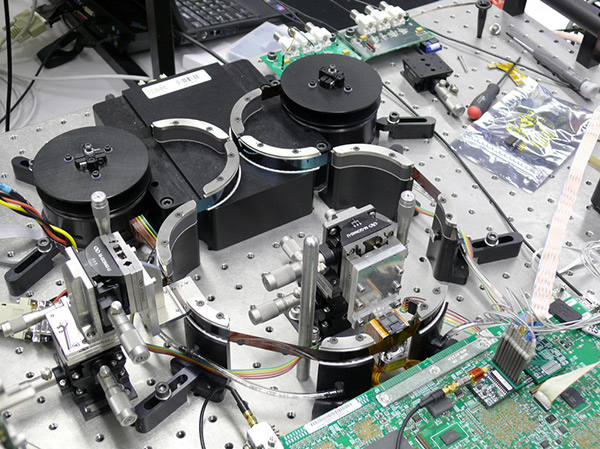IBM tape drives will be checked in the SKA radio telescope

In 2010, researchers from IBM Research in Zurich (Switzerland), together with colleagues from Fujifilm, developed a prototype tape drive (tape drive) in which the data recording density is up to 29.5 Gbit / square inch. This is a world record for recording information density on a magnetic tape. Based on the declared information density, about 35 terabytes will fit on a small 10 x 10 x 2 cm cartridge.
The rate of 29.5 Gbit per square inch is about 39 times greater than the surface recording density in the most popular modern data storage systems on magnetic tape. The secret is in a special magnetic tape Nanocubic from Fujifilm, covered with microparticles of barium ferrite (BaFe). Another component of the success of the experiments was a new, more reliable data reading scheme, which made it possible to reduce the size of the reading head to 0.2 μm. In addition, the researchers managed to reduce the width of the half-inch tape track to 0.45 microns.

')
Over the past two years, IBM has continued to develop a prototype and has already made significant progress. The first real test for IBM streamers will be the giant SKA (Square Kilometer Array) radio telescope . This is a unique scientific project that requires recording up to 1 petabyte of compressed data per day.
The construction of the SKA should begin in 2016. It is planned to begin observations by 2019, and reaching full capacity by 2024. The largest radio telescope in the world will help verify the provisions of the general theory of relativity, collect data on the evolution of the Universe and dark matter.

IBM is involved in the IBM tape drive system project for SKA by engineer Evangelos Eleftheriou. He says that by the time the radio telescope is launched, IBM will increase the capacity of standard cartridges for tape drive to 100 terabytes.
Tape drives have not only a record low cost per gigabyte, but also a record low power consumption. While the plates of the hard drives are constantly connected to the power supply (consuming and converting to heat a sufficiently large amount of electricity), the tape drive mechanism is in an inactive state when there is no need to write or read data. Thus, data storage devices on magnetic tape consume about 200 times less electricity than an array of hard drives of equivalent capacity.
Magnetic tape is significantly inferior to the hard drive in speed. To speed up data retrieval, researchers are developing a special LTFS (Linear Tape File System) file system, in which the speed of random reading will increase due to the optimization of the location of data blocks.
Thus, streamers can really replace HDD in storage systems for large data arrays, as in the SKA project.
Source: https://habr.com/ru/post/156225/
All Articles